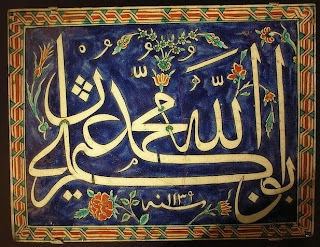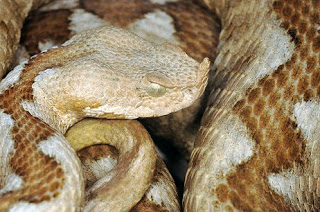Ottoman Calligraphy
This is a sponsored post in courtesy of The Pen Company
Ottoman calligraphy began its life when the Turks migrated from Central Asia towards Asia Minor coming into contact with Islam along the way, they abandoned the traditional Uyghur text and adopted a hybrid written language based on Persian and Arabic tradition. In Islamic theology the text of the Qur'an is considered sacred as it is the word of Allah himself as revealed to the prophet Muhammed. This combined with the fact that artworks picturing human and animal forms are prohibited, meant that calligraphy as an art form flourished in the Ottoman empire with the most impressive works being undertaken in Istanbul. Istanbul became the capital of the Ottoman state in 1453 after Fatih Mehmet took the city effectively ending the Byzantium empire. Within Istanbul there are many fine examples of Turkish calligraphy one of the most famous being engraved in 1478 over the imperial gate at Topkapi palace by Ali Sofi a calligrapher in the reign on Sultan Mehmet the Conqueror.
Another famous and impressive example of Ottoman calligraphy is the Ottoman Tughra a highly stylised calligraphic signature that also acted as the Sultans seal and could be found on official state paperwork, coins and medals.
The Tughra varied from Sultan to Sultan and various examples can also be found carved above gates at Topkapi palace. Each Sultan would have a new Tughra designed by the court calligrapher at the start of his reign. The picture is the tughra of Sultan Mahmud II of the Ottoman empire, It reads Mahmud Khan son of Abdülhamid is forever victorious. Written in full it would appear like this:
محمود خان بن عبدالحميد مظفر دائماً
If you are interested to see a collection of beautiful examples of Ottoman calligraphy the Sakıp Sabancı Museum in Istanbul is located near Emirgan park and houses a collection of calligraphic art. The collection spans a period of 500 years and offers a comprehensive view of Ottoman calligraphic art consisting of nearly four hundred separate pieces including manuscript Korans , prayer books, calligraphic panels, imperial documents, poetry books and calligraphic tools.
Visiting Hours
Tuesday, Thursday, Friday, Saturday, Sunday: 10 am - 6 pm
Wednesday: 10 am - 9 pm
Closed on Mondays.
Contact
Sabancı Üniversitesi- Sakıp Sabancı Müzesi
Istinye Cad. No:22
Emirgan 34467- Istanbul
Tel : 0 212 277 22 00
Fax : 0 212 229 49 14
Web : http://muze.sabanciuniv.edu
E-mail address : muze@sabanciuniv.edu
.
Ottoman calligraphy began its life when the Turks migrated from Central Asia towards Asia Minor coming into contact with Islam along the way, they abandoned the traditional Uyghur text and adopted a hybrid written language based on Persian and Arabic tradition. In Islamic theology the text of the Qur'an is considered sacred as it is the word of Allah himself as revealed to the prophet Muhammed. This combined with the fact that artworks picturing human and animal forms are prohibited, meant that calligraphy as an art form flourished in the Ottoman empire with the most impressive works being undertaken in Istanbul. Istanbul became the capital of the Ottoman state in 1453 after Fatih Mehmet took the city effectively ending the Byzantium empire. Within Istanbul there are many fine examples of Turkish calligraphy one of the most famous being engraved in 1478 over the imperial gate at Topkapi palace by Ali Sofi a calligrapher in the reign on Sultan Mehmet the Conqueror.
Another famous and impressive example of Ottoman calligraphy is the Ottoman Tughra a highly stylised calligraphic signature that also acted as the Sultans seal and could be found on official state paperwork, coins and medals.
The Tughra varied from Sultan to Sultan and various examples can also be found carved above gates at Topkapi palace. Each Sultan would have a new Tughra designed by the court calligrapher at the start of his reign. The picture is the tughra of Sultan Mahmud II of the Ottoman empire, It reads Mahmud Khan son of Abdülhamid is forever victorious. Written in full it would appear like this:
محمود خان بن عبدالحميد مظفر دائماً
If you are interested to see a collection of beautiful examples of Ottoman calligraphy the Sakıp Sabancı Museum in Istanbul is located near Emirgan park and houses a collection of calligraphic art. The collection spans a period of 500 years and offers a comprehensive view of Ottoman calligraphic art consisting of nearly four hundred separate pieces including manuscript Korans , prayer books, calligraphic panels, imperial documents, poetry books and calligraphic tools.
Visiting Hours
Tuesday, Thursday, Friday, Saturday, Sunday: 10 am - 6 pm
Wednesday: 10 am - 9 pm
Closed on Mondays.
Contact
Sabancı Üniversitesi- Sakıp Sabancı Müzesi
Istinye Cad. No:22
Emirgan 34467- Istanbul
Tel : 0 212 277 22 00
Fax : 0 212 229 49 14
Web : http://muze.sabanciuniv.edu
E-mail address : muze@sabanciuniv.edu
.





Comments